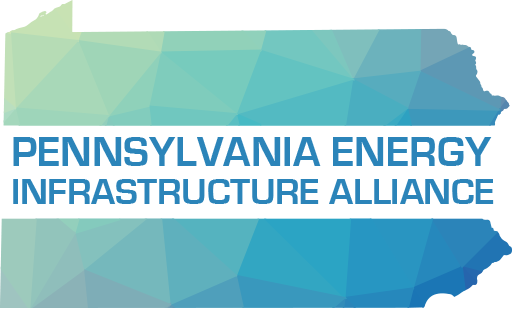With the growth of natural gas and NGL development in Pennsylvania, the following facts demonstrate that it is vital that our state continues to develop infrastructure to transport these home grown resources to power new jobs, industries and local economies.
Pennsylvania ranks 2nd in natural gas and gas liquids production in the U.S. (Source: EIA, “Rankings: Crude Oil Production, April 2014”)
The 2014 Annual Energy Outlook Reference case projects industrial consumption of natural gas and petroleum to increase substantially from 2014 levels by 2025 and NGL and petrochemical feedstock consumption to increase 44 percent from 2014 levels by 2025. Many of these increased operations will require access to, and be sited near, natural gas and NGL infrastructure. (Source: Energy Information Administration, 2014 Annual Energy Outlook)
Pipelines have been proven to be the safest, most efficient means of transporting natural gas and gas liquids, resulting in far fewer incidents than road and rail. (Source: Pipeline Hazardous Materials Safety Administration and Manhattan Institute for Public Policy and Research)
Today, there are more than 305,000 miles of natural gas and gas liquids (NGL) pipeline in the United States, and 8,680 miles in Pennsylvania. Every day, this critical infrastructure provides the means necessary to safely deliver clean and efficient energy to millions of Americans. (Source: EIA, “Estimated Natural Gas Pipeline Mileage in the Lower 48 States, Close of 2008”)
…[W]e must make pipeline infrastructure a priority, ensuring the health, safety, and security of communities and the environment while supporting projects that can contribute to economic growth and a secure energy future. (Source: Presidential Memorandum, President Obama 3/22/12)
In 2013, Philadelphia’s Manufacturing Task Force, appointed by Mayor Michael A. Nutter, released a report on restoring Philadelphia’s manufacturing sector, which found increasing natural gas liquids pipeline capacity and delivery to the Greater Philadelphia region as an essential component to a regional manufacturing resurgence to compete with the established chemical industry in the Gulf Coast region. (Source: Manufacturing Growth Strategy Study – City of Philadelphia, 2013)
According to a recent report by the Propane Education and Research Council, with the rapid development of shale gas resources in recent years, more than 70% of domestic propane today originates from natural gas production (instead of petroleum refining), which is a change that lowers the carbon intensity of propane. (Source: Propane Education and Research Council, 2015)
